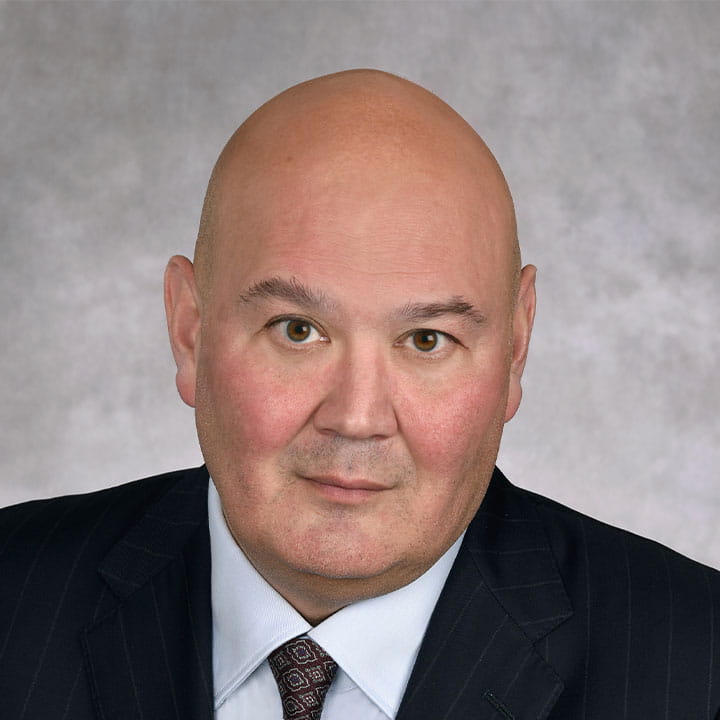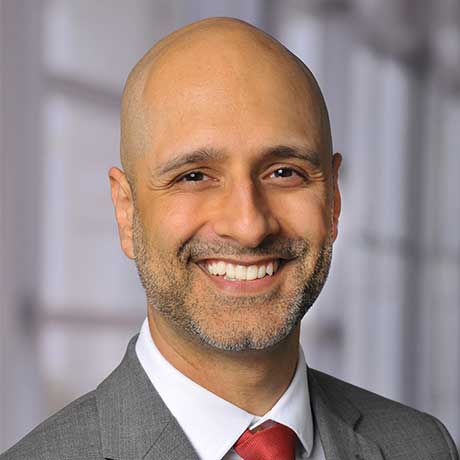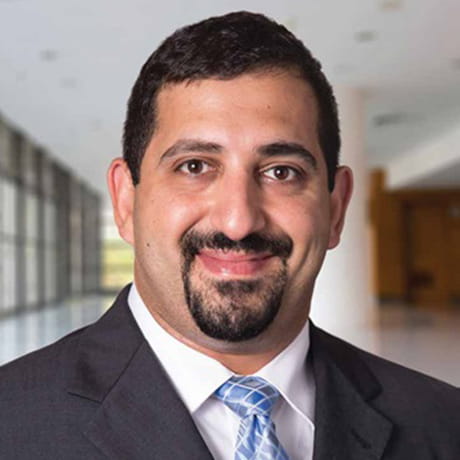
Kerry-Ann Mitchell, MD, PhD
- Plastic Surgery, Physician
Surgery to treat brain and skull conditions can have life-changing, but potentially disfiguring results. These can include skull indentations, missing bone and tissue, uneven facial features and visible lumps, bumps and scars.
At The Ohio State University Wexner Medical Center in Columbus, neuroplastic reconstructive specialists are part of the care team for advanced neurological procedures. Ohio State neurosurgeons, experts in brain, spine and nervous system surgery, work closely with neuroplastic surgeons, experts in skull and scalp reconstructive surgery, for comprehensive results. From consultation and pre-surgical planning through surgery and recovery, you receive exceptional care — inside and out.
Our reconstructive surgery team includes doctors who are part of the Ohio State Wexner Medical Center and The Ohio State University Comprehensive Cancer Center – Arthur G. James Cancer Hospital and Richard J. Solove Research Institute. Other areas of specialization include microsurgery, microvascular surgery, facial reconstructive surgery, comprehensive wound care and tissue reconstruction.
When brain or head surgery leaves dents, bumps or gaps in your skull, our neuroplastic reconstructive experts step in to help. They use advanced techniques to reshape and smooth out the natural curve of the skull. They may replace missing or damaged sections of bone and scalp. They can restore, rebuild, even out or reshape facial features. Neuroplastic specialists create unique implants to ensure brain protection while preserving natural appearance.
These and other cosmetic improvements can change your look and your outlook after surgery. Related brain, head and skull conditions and treatments may include:
Cranioplasty — The surgeon repairs skull bone defects from previous surgeries, congenital conditions or head injuries using bone or a customized implant.
Craniectomy — Surgeons remove a piece of skull bone to relieve pressure after head trauma.
Brain implants — Neuroplastic experts create streamlined housing to hold embedded medical devices such as deep brain stimulation (DBS) for seizures or tremors, or shunts that drain fluid buildup. Custom prefabricated devices fit better without protruding conspicuously.
Facial reconstruction — These procedures include reshaping or rebuilding facial features or placing custom-molded implants. With 3D printing capabilities, doctors can closely match natural facial features. They may use specially molded facial implants to replace injured or traumatized facial features.
Pain relief — Proper skull shape, strengthened materials and support may reduce headaches and other neurological complications of past surgery or injury.
Scalp surgery — Skin cancer can grow on the scalp, and other cancers can spread to your scalp and head. Doctors remove tumors and surrounding tissues, and repair or transplant scalp tissues.
Neuroplastic surgeons may be involved in procedures, conditions or treatments such as:
Ohio State’s neuroplastic experts use sophisticated technologies and techniques such as 3D CAD/CAM technology (computer-aided design and manufacturing). Our doctors develop and implant premade, customized face, head and skull implants. By tailoring the fit and form with custom biocompatible materials, they can give you inconspicuous, natural-looking results.
Other materials used during reconstructive procedures may include:
Bone grafts — Doctors use your own transplanted bone tissues from other areas of the skull or other parts of the body, such as a rib or pelvic bone.
Synthetic materials – To shape or repair the skull, doctors may use artificial bone substitutes and materials, such as:
You’ll have a physical exam and imaging or other diagnostic testing during early office visits. The doctor will evaluate your condition, including health and medical history. Testing you may receive include:
During pre-surgery office visits, you’ll learn about how to prepare for your procedure, including medications to take or discontinue and when to fast from food and beverages. Your doctor and care team will discuss your likely length of hospitalization as well as details about discharge and recovery. You’ll need to make advance arrangements for safe transportation and someone to help you at home while you recover.
Neuroplastic surgery may be done as part of a neurosurgical procedure or in a second, follow-up procedure. Your doctor will discuss your specific treatment steps and expectations based on your condition and treatment plan.
Your neurosurgeon will provide information about these and other types of brain conditions:
Your doctors will discuss your specific procedure, including how long it’s likely to take. You may be referred to other teams members including infectious disease specialists, cardiology and other neurosurgeons.
Surgeons perform head and skull procedures in a hospital setting under general anesthesia. You’ll be in a deep, sleep-like state during the procedure and won’t feel anything.
Surgical approaches and techniques vary widely depending on the type of brain, head and skull surgery you’re having. You may need to have multiple surgeries depending on the complexity of your case. Ohio State’s cancer reconstructive specialists treat brain and other cancers, and cancer-related face, head and skull reconstruction.
Depending on your procedure, neuroplastic treatments can include:
During facial reconstruction, your doctor may remove injured or diseased parts of the face and restore or restructure facial features depending on specific reconstructive surgery treatment goals. Facial surgery sometimes includes implantation of custom-molded forms to achieve the desired appearances as discussed with your surgeon.
When surgical treatments are complete, the surgeon closes incisions with sutures or staples. They cover and protect wounds with sterile gauze and bandages or other materials. The surgeon may leave short fluid-drainage tubes in treated areas to drain blood and fluids while you heal. Your doctor will remove any tubes and non-absorbable sutures during a follow-up office visit.
You’ll wake up in a recovery room where your care team will monitor your condition. Your doctor and care team will check on you periodically as you rest. Some pain and swelling is expected, but your doctor will prescribe pain medicine to keep you comfortable.
Your doctor and care team will guide you through recovery steps, including wound care, expected recovery times and results, home or residential nursing care as needed, and follow-up appointments.
For certain conditions, your doctor may prescribe inpatient or outpatient neurological rehabilitation or specialized cancer rehabilitation.
There are risks associated with any surgery. These vary depending on your condition, medical history and treatment plan, including the specific part of your face, head or skull that is treated. Complications of surgery can include bleeding, infection and anesthesia reactions.
Your surgeon will discuss these and other potential risks of brain, head or skull procedures:
Ohio State combines several specialties into a single, seamless program. Surgeons have advanced, fellowship-level skills, training and experience, delivering a higher level of care:
Their work is supported by a renowned neurological research institute — a world leader in brain and spine treatment and research.
Ohio State surgeons are physician leaders involved in plastic and reconstructive research including pioneering treatments and technologies on every front.
Current areas of neuroplastic study include:
Our reconstructive surgeons have microsurgery and super-microsurgery specialization. They operate with meticulous skill, assisted by powerful magnifying tools and technologies. This superior accuracy and precision helps to minimize wounds and scarring, improve wound-healing and achieve all-around successful outcomes.









